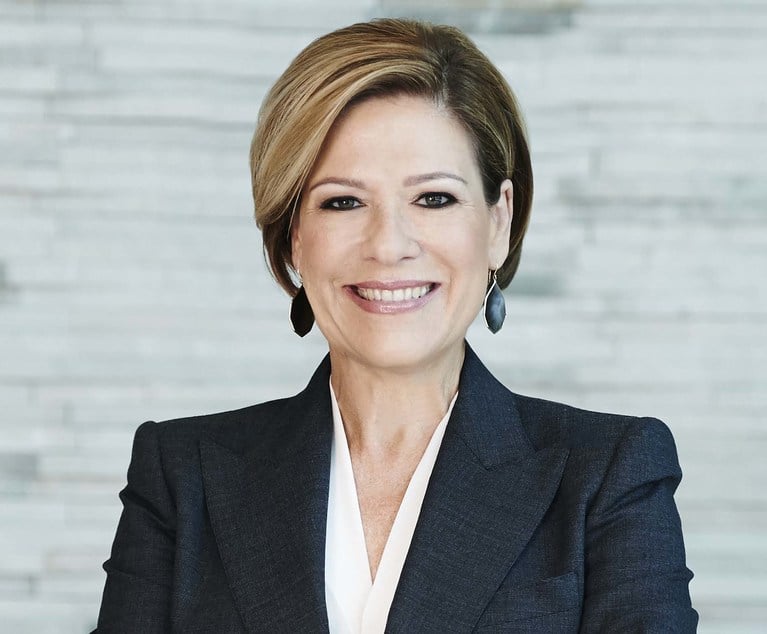
GRAPEVINE, TX—In March of this year, I wrote about the 7 things that kill a CMBS assumption. Well, now in September, we have found the 8th killer of a CMBS assumption. Before getting to the 8th killer, here's a quick recap of the 7 killers:
- Loan to purchase price. Some special servicers are requiring the loan to “value” (“LTV”) be equal to or less at the time of assumption than what it was at origination of the loan by requiring the buyer to post a reserve equal to the difference. Plus, since CMBS loans cannot actually be paid down, the money is held in a reserve account for the remainder of the term of the loan; which obliterates a buyer's ROI.
- Increase in reserves. Most people know by now that an assumption of the loan is a time for CMBS servicers to re-assess the adequacy of the reserves, but many people do not understand the magnitude of the potential increases being required. The servicers will review all roll-over between the assumption date and maturity and want to ensure that all future potential tenant improvement and leasing commissions are in reserve at the time of closing of the assumption and they will use market leasing assumptions and terms (often five years). This can have the net effect of having some leases roll twice during the remaining life of the loan!
- Non-recourse carve-out guarantors. If the servicer has a 'warm body' as the current carve-out guarantor for the CMBS loan, they want to have a 'warm body' replacement guarantor. In instances where the buyer's structure does not allow a warm body as the replacement guarantor, like a REIT, the servicer will require the new entity to maintain a minimum net worth, and liquidity, at all times after the assumption is closed. Plus, they are now requiring a '”springing warm body” in the event the fund falls below the minimum net worth test. This means the buyer is required to identify one or more warm bodies to serve as the springing carve-out guarantor(s) and the servicer must underwrite those warm bodies at the time of the underwriting of the assumption.
- Controlling Class Representative (CCR). The CCR, the holder of the lowest rated bond position in the investment stack, is the last approval party in the long chain of approvals required on a CMBS assumption. Prior to CMBS 3.0, the CCR rarely got involved in assumption requests/consents, let alone added new conditions when the file got to it. In the later vintage CMBS pools (2012 and later), the CCR often places its own conditions in the very final approval step, which catches most buyers off guard and often has the potential to kill a deal.
- Foreign buyers. Seventeen percent of all commercial real estate purchases in 2015 were from foreign investors; yet foreign investors cannot assume an existing CMBS loan—unless the foreign investor has previous US real estate experience with like property type and US-based fixed assets. Foreign investors looking to make their first purchase in the US will likely not qualify for the assumption of a CMBS loan. Many sellers do not know this and start the assumption process believing the buyer will qualify due to its/their financial strength, only to find out much later in the process that the deal will not be approved.
- Crowdfunding. The definition of crowdfunding is “the practice of funding a project by raising many small amounts of money from a large number of people.” Regardless of what you call the buying entity, the servicers will require at least one, large, “deep pocket” investor who owns a controlling interest in the borrower. A seller may believe it is selling the property to a REIT, only to find out the REIT is structured like a crowd funded deal and the approval will not be granted. Any structure without at least one, large, “deep pocket” investor will likely not be approved.
- Cash management. Most buyers planning to assume an existing CMBS loan believe cash management will not be required if cash management is not in place today. Nothing could be further from the truth. Cash management is often being added as a condition to the assumption approval due to any of the following reasons: (a) seller is perceived as stronger than buyer financially or experientially, (b) buyer's credit history on its commercial real estate portfolio is less than stellar, (c) an entity will be the new carve-out guarantor and a warm body is in place with the seller, or (d) any other reason the servicer deems appropriate.
And now, the 8th killer:
Until recently, when a buyer assumed a CMBS loan, the buyer would sign new Indemnifications and Guarantees effective the date the assumption closed. The seller retained liability for those same guarantees and indemnifications for the time period the property was “under its watch” (from origination of the loan through the date of the assumption closing).
Lately, some servicers are requiring the buyer to sign new Indemnifications and Guarantees effective as of the date of origination of the loan. It is then incumbent on the buyer to get an indemnification from the seller for the time period it owned the property. Although it is easy to understand the benefit to the servicer of this requirement, and maybe even to see a benefit to the seller, but it does not work too well for buyers and some buyers are expressing their concern with their feet by walking from the transaction!
In some cases, it might work for the buyer and seller to indemnify each other, but think of the scenario I often use for illustrative purposes: assume Bill Gates is the buyer and Ann Hambly is the seller. The transaction would get approved in 2 minutes and the servicer will want Bill Gates to sign the guarantees and indemnifications from the date of origination of the loan. But, will Bill Gates ever get comfortable with an indemnification from Ann Hambly? Likely not!
Remember that the key underwriting objective of a CMBS assumption is to ensure the CMBS Trust is no worse off with the buyer and buyer guarantor than they are today with the existing owner and guarantor.
It is always interesting to get people's feedback of the CMBS assumption process. It is either horrible or okay and the reaction is always predicated on whether the strongest party in the transaction was the seller or buyer and whether that party is the one giving the feedback. In other words, let's say Bill Gates is selling the property to Ann Hambly again. We will both probably have a horrible reaction to the CMBS assumption approval process because it will be painful! There is no way to properly level the scale when Bill Gates is one side of the transaction and Ann Hambly is on the other side.
Now assume Bill Gates is the buyer and Ann Hambly is the seller. We will both probably have no issues with the CMBS assumption approval process because it will sail through and be approved with no concerns. BUT, God forbid Bill Gates now try to sell to someone else during the remaining life of that CMBS loan. It won't go so smooth the net time because likely the buyer will not be as strong as Bill Gates.
So…which party in the CMBS assumption approval process can see both sides of the scale to know how equally weighted it is? Remember that this is the main objective of the whole underwriting process. The servicers can see both sides and that is how they come up with many of their conditions, but who from the business side can see both sides? The answer is NO ONE! And that is why an experienced CMBS assumption expeditor is beneficial to the transaction; if not critical to the transaction!
Ann Hambly is founder, president and CEO of 1st Service Solutions, based in Grapevine, TX. The views expressed here are the author's own.

GRAPEVINE, TX—In March of this year, I wrote about the 7 things that kill a CMBS assumption. Well, now in September, we have found the 8th killer of a CMBS assumption. Before getting to the 8th killer, here's a quick recap of the 7 killers:
- Loan to purchase price. Some special servicers are requiring the loan to “value” (“LTV”) be equal to or less at the time of assumption than what it was at origination of the loan by requiring the buyer to post a reserve equal to the difference. Plus, since CMBS loans cannot actually be paid down, the money is held in a reserve account for the remainder of the term of the loan; which obliterates a buyer's ROI.
- Increase in reserves. Most people know by now that an assumption of the loan is a time for CMBS servicers to re-assess the adequacy of the reserves, but many people do not understand the magnitude of the potential increases being required. The servicers will review all roll-over between the assumption date and maturity and want to ensure that all future potential tenant improvement and leasing commissions are in reserve at the time of closing of the assumption and they will use market leasing assumptions and terms (often five years). This can have the net effect of having some leases roll twice during the remaining life of the loan!
- Non-recourse carve-out guarantors. If the servicer has a 'warm body' as the current carve-out guarantor for the CMBS loan, they want to have a 'warm body' replacement guarantor. In instances where the buyer's structure does not allow a warm body as the replacement guarantor, like a REIT, the servicer will require the new entity to maintain a minimum net worth, and liquidity, at all times after the assumption is closed. Plus, they are now requiring a '”springing warm body” in the event the fund falls below the minimum net worth test. This means the buyer is required to identify one or more warm bodies to serve as the springing carve-out guarantor(s) and the servicer must underwrite those warm bodies at the time of the underwriting of the assumption.
- Controlling Class Representative (CCR). The CCR, the holder of the lowest rated bond position in the investment stack, is the last approval party in the long chain of approvals required on a CMBS assumption. Prior to CMBS 3.0, the CCR rarely got involved in assumption requests/consents, let alone added new conditions when the file got to it. In the later vintage CMBS pools (2012 and later), the CCR often places its own conditions in the very final approval step, which catches most buyers off guard and often has the potential to kill a deal.
- Foreign buyers. Seventeen percent of all commercial real estate purchases in 2015 were from foreign investors; yet foreign investors cannot assume an existing CMBS loan—unless the foreign investor has previous US real estate experience with like property type and US-based fixed assets. Foreign investors looking to make their first purchase in the US will likely not qualify for the assumption of a CMBS loan. Many sellers do not know this and start the assumption process believing the buyer will qualify due to its/their financial strength, only to find out much later in the process that the deal will not be approved.
- Crowdfunding. The definition of crowdfunding is “the practice of funding a project by raising many small amounts of money from a large number of people.” Regardless of what you call the buying entity, the servicers will require at least one, large, “deep pocket” investor who owns a controlling interest in the borrower. A seller may believe it is selling the property to a REIT, only to find out the REIT is structured like a crowd funded deal and the approval will not be granted. Any structure without at least one, large, “deep pocket” investor will likely not be approved.
- Cash management. Most buyers planning to assume an existing CMBS loan believe cash management will not be required if cash management is not in place today. Nothing could be further from the truth. Cash management is often being added as a condition to the assumption approval due to any of the following reasons: (a) seller is perceived as stronger than buyer financially or experientially, (b) buyer's credit history on its commercial real estate portfolio is less than stellar, (c) an entity will be the new carve-out guarantor and a warm body is in place with the seller, or (d) any other reason the servicer deems appropriate.
And now, the 8th killer:
Until recently, when a buyer assumed a CMBS loan, the buyer would sign new Indemnifications and Guarantees effective the date the assumption closed. The seller retained liability for those same guarantees and indemnifications for the time period the property was “under its watch” (from origination of the loan through the date of the assumption closing).
Lately, some servicers are requiring the buyer to sign new Indemnifications and Guarantees effective as of the date of origination of the loan. It is then incumbent on the buyer to get an indemnification from the seller for the time period it owned the property. Although it is easy to understand the benefit to the servicer of this requirement, and maybe even to see a benefit to the seller, but it does not work too well for buyers and some buyers are expressing their concern with their feet by walking from the transaction!
In some cases, it might work for the buyer and seller to indemnify each other, but think of the scenario I often use for illustrative purposes: assume Bill Gates is the buyer and Ann Hambly is the seller. The transaction would get approved in 2 minutes and the servicer will want Bill Gates to sign the guarantees and indemnifications from the date of origination of the loan. But, will Bill Gates ever get comfortable with an indemnification from Ann Hambly? Likely not!
Remember that the key underwriting objective of a CMBS assumption is to ensure the CMBS Trust is no worse off with the buyer and buyer guarantor than they are today with the existing owner and guarantor.
It is always interesting to get people's feedback of the CMBS assumption process. It is either horrible or okay and the reaction is always predicated on whether the strongest party in the transaction was the seller or buyer and whether that party is the one giving the feedback. In other words, let's say Bill Gates is selling the property to Ann Hambly again. We will both probably have a horrible reaction to the CMBS assumption approval process because it will be painful! There is no way to properly level the scale when Bill Gates is one side of the transaction and Ann Hambly is on the other side.
Now assume Bill Gates is the buyer and Ann Hambly is the seller. We will both probably have no issues with the CMBS assumption approval process because it will sail through and be approved with no concerns. BUT, God forbid Bill Gates now try to sell to someone else during the remaining life of that CMBS loan. It won't go so smooth the net time because likely the buyer will not be as strong as Bill Gates.
So…which party in the CMBS assumption approval process can see both sides of the scale to know how equally weighted it is? Remember that this is the main objective of the whole underwriting process. The servicers can see both sides and that is how they come up with many of their conditions, but who from the business side can see both sides? The answer is NO ONE! And that is why an experienced CMBS assumption expeditor is beneficial to the transaction; if not critical to the transaction!
Ann Hambly is founder, president and CEO of 1st Service Solutions, based in Grapevine, TX. The views expressed here are the author's own.
© 2025 ALM Global, LLC, All Rights Reserved. Request academic re-use from www.copyright.com. All other uses, submit a request to [email protected]. For more information visit Asset & Logo Licensing.







